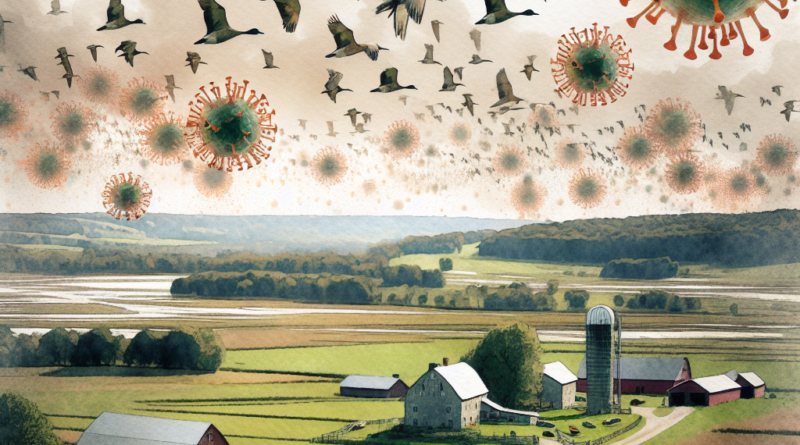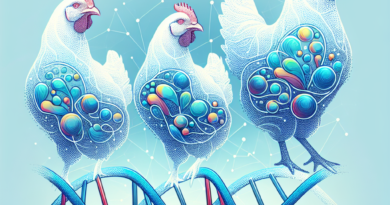Unveiling the Reassortant Avian Influenza H5N2 Virus with Eurasian H5N8 Lineage Genes in North America
Understanding Highly Pathogenic Avian Influenza (HPAI)
Avian influenza, commonly known as bird flu, is an infectious viral disease of birds. Often, it’s of little concern, causing mild symptoms or going undetected in wild bird populations. However, when the virus becomes highly pathogenic, it can cause severe disease and high mortality rates in domesticated birds such as chickens and turkeys. This is not just a concern for animal health; certain strains of bird flu can infect humans, posing a significant public health risk.
The H5N1 strain of bird flu is particularly notorious. Since its emergence in 1996, it has led to the deaths of hundreds of millions of birds and has been responsible for human fatalities as well. The virus is categorized into clades, which are groups of viruses that share a common ancestor. Over time, these viruses can exchange genetic material with other influenza viruses – a process known as reassortment – leading to new, potentially more dangerous strains.
One such reassortant virus is the H5N2 strain, which was identified in a 2014 outbreak in British Columbia, Canada. This particular strain was notable because it contained gene segments related to the Eurasian H5N8 strain, marking the first appearance of these genes in North American poultry.
Results of the Study
The study in question, conducted by Pasick et al. (2015), focused on two outbreaks of HPAI H5N2 in British Columbia. The first outbreak occurred in a flock of 11,000 meat turkeys, where the mortality rate exceeded 70% over three days. The second outbreak was in a broiler breeder flock, which experienced a 10% mortality rate over 24 hours.
Post-mortem examinations and molecular analyses revealed that the birds were infected with a novel reassortant H5N2 virus. This virus combined gene segments from the Eurasian HPAI H5N8 strain with those from North American lineage waterfowl viruses. Specifically, the turkeys and chickens were found to be infected with almost genetically identical viruses, with intravenous pathogenicity indices of 2.98 and 2.96, respectively. These indices are measures of the severity of the disease in birds, with higher values indicating a more pathogenic virus.
The genetic makeup of the virus indicated a preference for avian cell receptors, but with mutations that could potentially enhance binding to human receptors. This finding raised concerns about the zoonotic and pandemic potential of the virus.
Impact and Future Prospects
The discovery of the HPAI H5N2 virus in North America is significant for several reasons. First, it underscores the role of migratory waterfowl in the spread of avian influenza viruses across continents. The study supported the hypothesis that these birds brought the Eurasian H5N8 virus to North America, where it reassorted with local viruses.
Second, the outbreak highlights the need for increased surveillance of avian influenza in wild birds. Understanding the movement and evolution of these viruses is crucial for preventing and controlling future outbreaks in domestic poultry and for assessing the risk to human health.
Looking ahead, the introduction of the Eurasian H5 lineage into North America could have far-reaching and unpredictable consequences. If these viruses establish themselves in wild bird populations, they could pose a continuous threat to poultry and potentially to humans. Therefore, ongoing research and vigilant monitoring of avian influenza viruses are essential.
In conclusion, while the study by Pasick et al. (2015) provides valuable insights into the evolution and spread of HPAI viruses, it also serves as a reminder of the interconnectedness of animal and human health and the importance of global surveillance systems in detecting and responding to emerging infectious diseases.
Reference
Pasick, J., Berhane, Y., Joseph, T., Bowes, V., Hisanaga, T., Handel, K., & Alexandersen, S. (2015). Reassortant Highly Pathogenic Influenza A H5N2 Virus Containing Gene Segments Related to Eurasian H5N8 in British Columbia, Canada, 2014. Scientific Reports, 5(1). http://dx.doi.org/10.1038/srep09484



